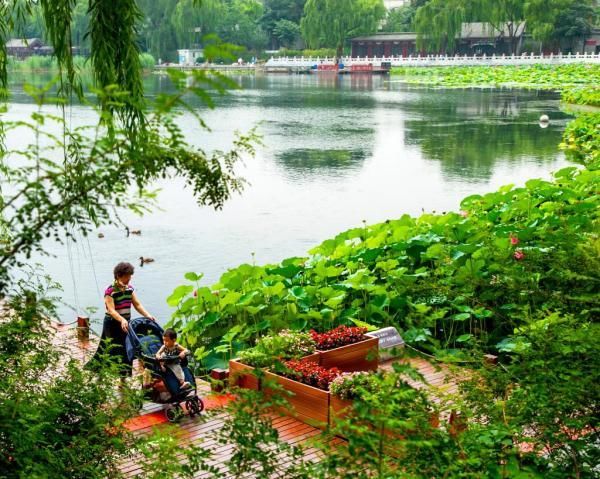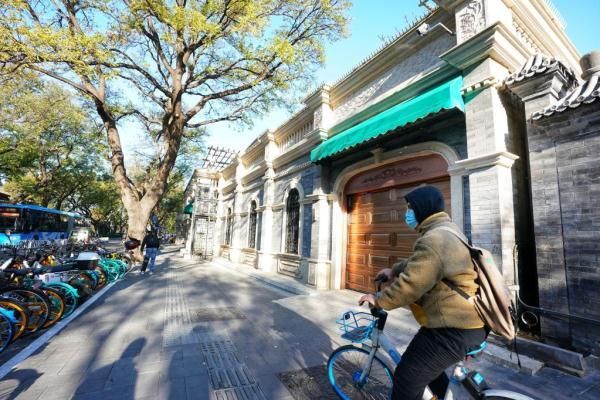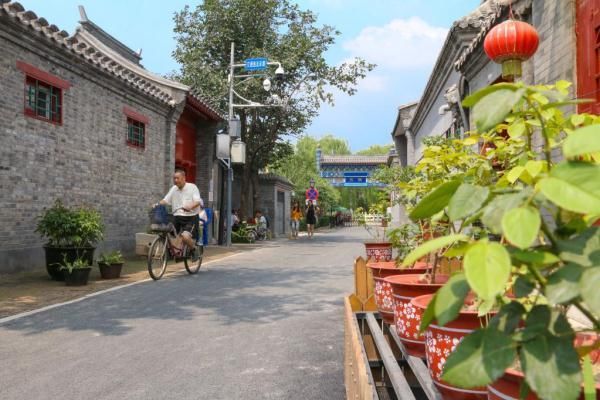This article is reproduced from: Guangming.com
Xinhua News Agency, Beijing, July 24th. Title: Farewell to demolition and construction, the old city is reborn – the changes taking place in the old city of Beijing
Xinhua News Agency reporters Wu Mengda, Guo Yujing, Lu Chang
Beijing is a world-famous ancient capital, and its rich historical and cultural heritage is a golden business card. The old city of Beijing, after years of washing, bears and accumulates the development process and profound changes of this famous historical and cultural city.
In recent years, by formulating new plans, exploring new mechanisms, and promulgating new regulations, Beijing has innovatively answered the questions of “what to protect”, “who will protect it”, “how to protect it” and “how to use it” for the protection of the old city. ” and other key issues, many residents living in the old city sighed: “In a few years, Beijing’s hutongs have changed, the cluttered scene has disappeared, and the Beijing flavor and Beijing charm are back!”
Proper protection has replaced it Great demolition and construction
In midsummer, walking along the mottled slate road in Beilucaoyuan Hutong, Dongcheng District, you can see blue bricks and gray tiles, hollow wooden windows, and several old neighborhoods in the courtyard. Sitting together, chatting while enjoying the shade… “This is what a hutong looks like in my memory.” Li Ke, a Beijing citizen who came here to “check in”, once lived in the Xianyukou area when he was a child, and revisited the hutong after more than ten years. of her thoughts. Today, the hutong environment has been improved, and the texture of the old city of Beijing is clearly visible.
Beijing’s new version of the city master plan and the capital functional core area control plan were officially approved by the Party Central Committee and the State Council in September 2017 and August 2020, respectively. In January 2021, the “Regulations on the Protection of Beijing’s Famous Historical and Cultural Cities”, which have been implemented for 16 years, will be re-enacted and will be officially implemented in March. Expanding the scope of protection, attaching importance to the value of the old city, and encouraging the revitalization and utilization of Beijing’s historical and cultural city protection, “what to protect”, “who will protect it”, “how to protect it” and “how to use it”, since then, there has been a clearer answer.

In the process of protecting the old city, Xicheng District has successively carried out environmental improvement on Shichahai Xihai, Houhai and Qianhai. The picture shows the improved Xihai Wetland Park. Photo courtesy of the Propaganda Department of Xicheng District Committee
In the opinion of many experts, replacing the past “old city reconstruction” with the new thinking of “old city protection” means farewell to the idea and path of large demolition and construction The historical stage has been established, and the protective and restorative buildings have truly adapted to the urban renewal of the strategic positioning of the capital city in the new era.
In Zhuzhong Hutong in Shichahai, Xicheng District, a courtyard adopted the method of “micro-improvement” to solve the problem that the soft-core color of the walls did not meet the requirements of traditional regulations. Begonia pond, assorted windows have added brick hanging and ice cracked latticework… Local residents praised the charm of the old house after the renovation.
Continue to promote overall protection and organic renewal
Bell Tower, Jingshan Xingqing Pavilion, Zhengyangmen Arrow Tower… 7.8 kilometers on both sides of the central axis, hundreds of Restoration projects of cultural relics have been launched one after another, and 19 heritage sites have been brought to life.
In recent years, Beijing has continued to promote the overall protection and organic renewal of the old city with the central axis application as the starting point, and the ancient capital of the millennium is showing a new brilliance.

Gulou West Street is the “oldest Xie Street in Beijing” built in the Yuan Dynasty and has been renovated and upgraded. Photo courtesy of Shichahai Street, Xicheng District
The protection of the old city is inseparable from policy innovation. The reporter learned that Beijing has innovatively introduced policies such as application-style rent cancellation, and deepened the protection and renewal of historical and cultural blocks, especially the bungalow areas of the old city. According to the latest statistics, since 2019, Beijing has successively launched 14 application-type lease cancellation projects in the Caixi area, Zhuanta Hutong, and surrounding areas of Bell and Drum Towers. A total of 4,061 application-type lease cancellations have been signed, and 5,100 households have been repaired.
How will the yard be used when it is vacated? In the Caixi area, after two years of rent cancellation, the “new Chinese-style” second-class courtyard under construction is waiting for new tenants – here is No. 16 Nurturing Hutong. The negotiation of intentions is also coming to an end, and the entire courtyard is expected to be unveiled by the end of this year. The courtyard is another case of the Caixi project continuing to promote the renewal of the old city.
In addition to the courtyards in the old city, the protection and utilization of historical and cultural heritage is also an important part of the protection of the old city of Beijing. It is understood that a total of 3,840 immovable cultural relics have been registered in Beijing, including 7 world cultural heritages, 135 national key cultural relics protection units, 255 municipal-level cultural relics protection units, and 752 district-level cultural relics protection units.
In Xicheng District, red resources have been fully revitalized, and renovations and exhibitions have been carried out on the retired former residence of Li Dazhao, Beijing News Office and other revolutionary sites. The relevant person in charge of the Xicheng District Culture and Tourism Bureau said that the withdrawal of Xicheng cultural relics has changed the history of setting up a public institution in a cultural protection unit in the past, introducing social capital to operate, and fully excavating the endowment and value behind the cultural relics on the basis of protection.
The old town rejuvenates and rejuvenates
“It used to be smuggled everywhere and there were piles of rubbish. The wires were as dense as spider webs, It’s not safe and it doesn’t look good. The public toilet environment is dirty and messy.” Zhu Maojin, an old neighbor of Caochang Hutong in Dongcheng District, said that now, the hutong is clean and beautiful, and the courtyard has restored the primitive appearance of blue bricks and gray tiles, red doors and green lattice windows.
The reporter found that in recent years, in the protection of the old city, the old city has gained new vitality. While paying attention to the protection of the old city, Beijing pays more attention to improving the living environment and living environment.

The renovation and improvement of Yuer Hutong in Dongcheng District was completed in mid-2019, and the Hutong became clean and bright.